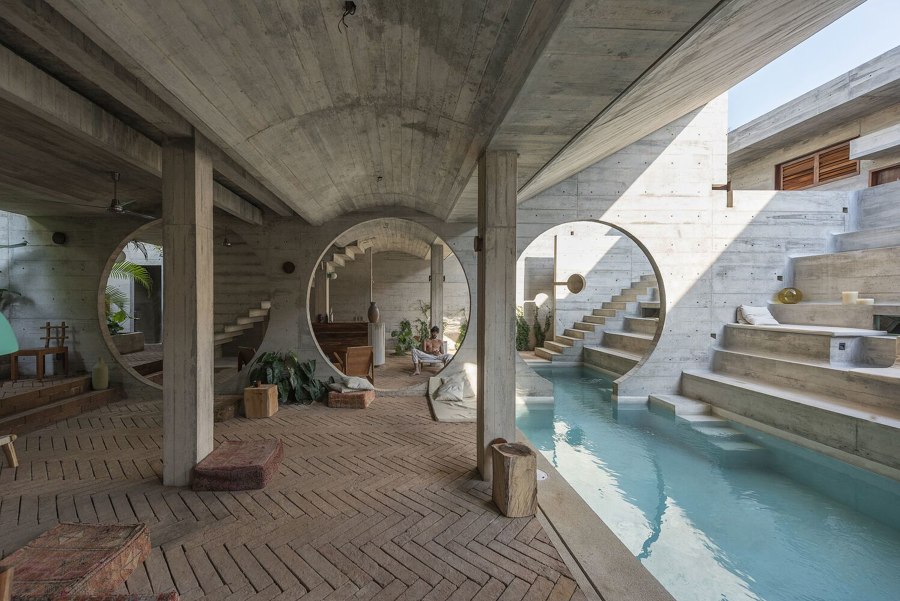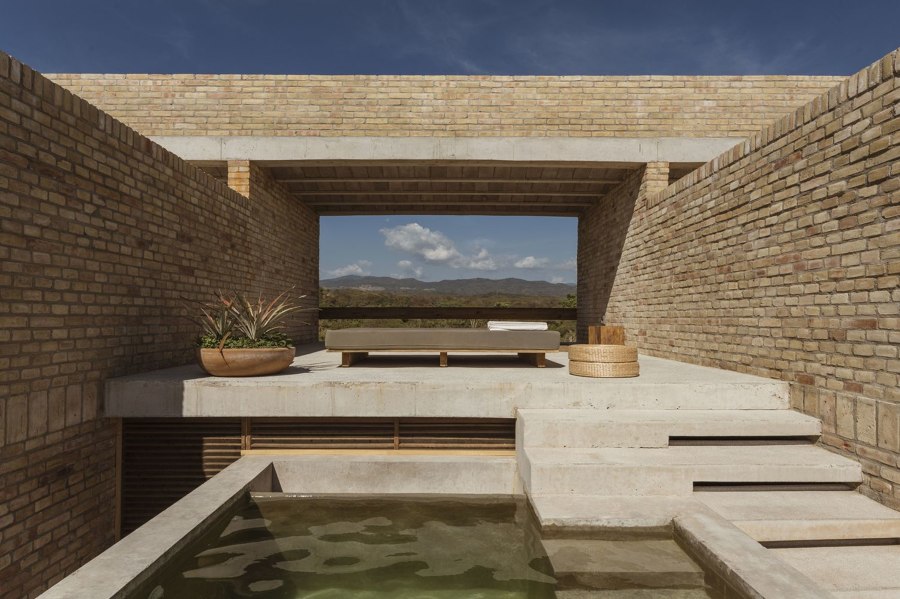Natural Mexican hotels with indigenous experiences
Texto por James Wormald
13.02.23
With culture-inspired architecture, scattered layouts and toned-down local materials, these serene Mexican hotels, resorts and guest houses offer luxurious realism.
The surroundings of the Paradero Hotel recreate the complex environment of the Baja California desert, inviting guests to experience the wilderness in comfort and luxury. Photo: Onnis Luque

The surroundings of the Paradero Hotel recreate the complex environment of the Baja California desert, inviting guests to experience the wilderness in comfort and luxury. Photo: Onnis Luque
×Rather than just a place to stay, the modern luxury hotel has, itself, become the destination. But the spectacular poolscapes, relaxing spas and salons, 5-star restaurants and unused fitness centres are only part of the story. Because if every city has luxury hotels with world-class service, meaning we never need to leave, why travel so far from home to get there?
What still gets us fumbling around for passports in the back of sock drawers, however, is the draw of experiencing another country, another culture and sometimes another climate. Hotels that connect guests with their environments, providing unique, individual experiences, are the real meaning of luxury. These four Mexican hotels, resorts and guest houses offer honest, realistic representations of indigenous Mexican culture and environments, while still providing the level of service and amenities we expect from a luxury hotel.
Intended as a ‘reinterpretation of an Oaxacan temple,’ Casa TO provides reflection and serenity in a busy tourist hotspot, with private high-walled gardens attached to each room. Photos: Jaime Navarro

Intended as a ‘reinterpretation of an Oaxacan temple,’ Casa TO provides reflection and serenity in a busy tourist hotspot, with private high-walled gardens attached to each room. Photos: Jaime Navarro
×Casa TO in La Punta Zicatela, Mexico, by Ludwig Godefroy Architecture
Set between Playa Zicatela and the Oaxacan mountains along the belly of southern Mexico, Casa TO is surrounded by the best the country’s tourism industry has to offer. Bookending high-octane and adventuring activities of the land and sea, the hotel’s avant-garde geometric architecture is a ‘reinterpretation of an Oaxacan temple,’ share the project architects, Ludwig Godefroy Architects, generating ‘a radical sensory experience just by entering it.’
The hotel’s avant-garde geometric architecture is a ‘reinterpretation of an Oaxacan temple’
With an honest design highlighting raw materials such as concrete, clay and wood, ‘Casa TO’s natural environment defines its interior,’ with each guest provided a private high-walled garden, framing the encroaching vines and fruit trees. TO ‘emphasises the textures and adds character to its environments,’ explain the architects, with unique furniture pieces and homewares. Created by local artisans, these pieces are also available for guests to purchase and ship home, allowing them to bring a part of Oaxacan culture back with them.
The Galopina Wild House fits communal areas (top) and private rooms (middle) at opposing ends of its site, using its natural topography (bottom) to enrich the experience. Photos: Fabián Martínez

The Galopina Wild House fits communal areas (top) and private rooms (middle) at opposing ends of its site, using its natural topography (bottom) to enrich the experience. Photos: Fabián Martínez
×Galopina Wild House in Seyé, Mexico, by TACO Taller de Arquitectura Contextual
In remote Seyé, North Yucatan, the Galopina Wild House guest house positions its main and secondary structures at opposing ends of the seven-hectare site of an old hacienda. Guests access the property through the main house, which includes communal spaces like a dining area, lounge and terrace, while the four private guest rooms are reached after walking through the untouched nature of the site.
‘Two of the guest rooms were embedded in the slopes of a hill, which have an evident relationship with the earth in the form of caves, and two at the top of the hill, from which there is a panoramic view of the surrounding landscape,’ explain architects TACO Taller de Arquitectura Contextual, of the site’s topography and layout.
The grounds and pathways of the Paradero Hotel are sculpted with local flora and soft sands, giving guests a naturally open yet comfortable experience. Photos: Onnis Luque

The grounds and pathways of the Paradero Hotel are sculpted with local flora and soft sands, giving guests a naturally open yet comfortable experience. Photos: Onnis Luque
×Paradero Hotel in Todos Santos, Mexico, by POLEN Arquitectura de Paisaje, Rubén Valdez, Yasher Yektajo
In this project, we aimed to emphasise the dynamism of the natural motion of the desert by exploring and highlighting the topography created by its winds,’ explains Yektajo Valdez Arquitectos, architects on the Paradero Hotel project in Todos Santos, at the southern edge of the Baja California peninsula, an environment dominated by desert.
Although the hotel is not positioned out in the wilderness itself, the architects were inspired by visits to the desert, influencing the placement of hotel buildings as well as the selection, growth and positioning of endemic desert flora, crafting not just a realistic wild experience, but a real one. ‘And to finish the full experience, we made the paths with the softest of sands of the area to encourage visitors to stride the hotel barefoot.’
Natural materials and sustainable architecture ensure Hotel Terrestre makes little impact on its environment, while the resort’s relaxing, open rooms allow guests to enjoy it. Photos: Fabián Martínez

Natural materials and sustainable architecture ensure Hotel Terrestre makes little impact on its environment, while the resort’s relaxing, open rooms allow guests to enjoy it. Photos: Fabián Martínez
×Hotel Terrestre in Puerto Escondido, Mexico, by Taller de Arquitectura X / Alberto Kalach
Already set in the flora and fauna of the Oaxacan rainforest, Hotel Terrestre didn’t need to install additional plantlife to provide impressive multi-directional views, but rather just avoid disturbing what was already there. With visually sensitive buildings made from sustainable, locally-sourced materials such as clay, brick and wood, the resort blends into its surroundings.
The seven scattered structures rely entirely on solar power
‘Climate control methods achieved through innovative construction techniques replace the dependence on air conditioning,’ explain the project architects Taller de Arquitectura X / Alberto Kalach, allowing the seven scattered structures to rely entirely on solar power for their energy requirements, ensuring the project stays respectful of the environment it almost reluctantly inhabits. ‘Hotel Terrestre seeks to be a place for nature and wellness lovers,’ say the architects, with private pools, hammocks and libraries in every suite encouraging a relaxed connection to its environment.
© Architonic
Head to the Architonic Magazine for more insights on the latest products, trends and practices in architecture and design.




















